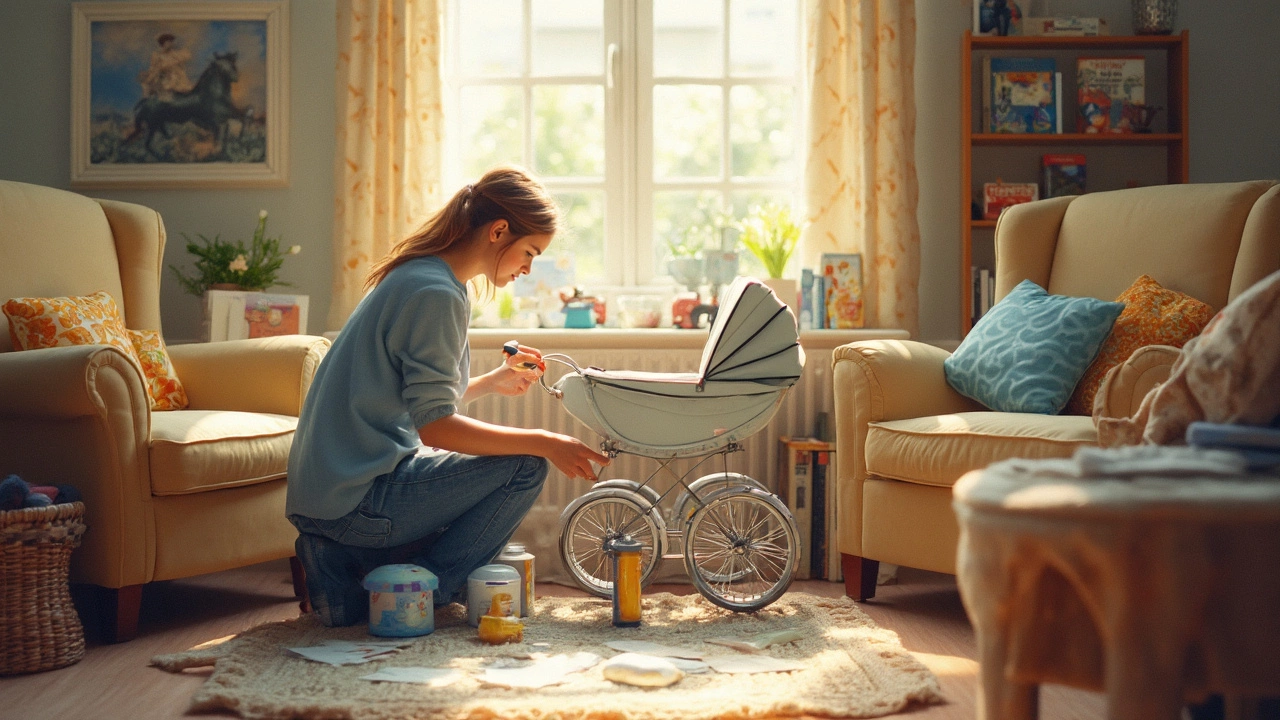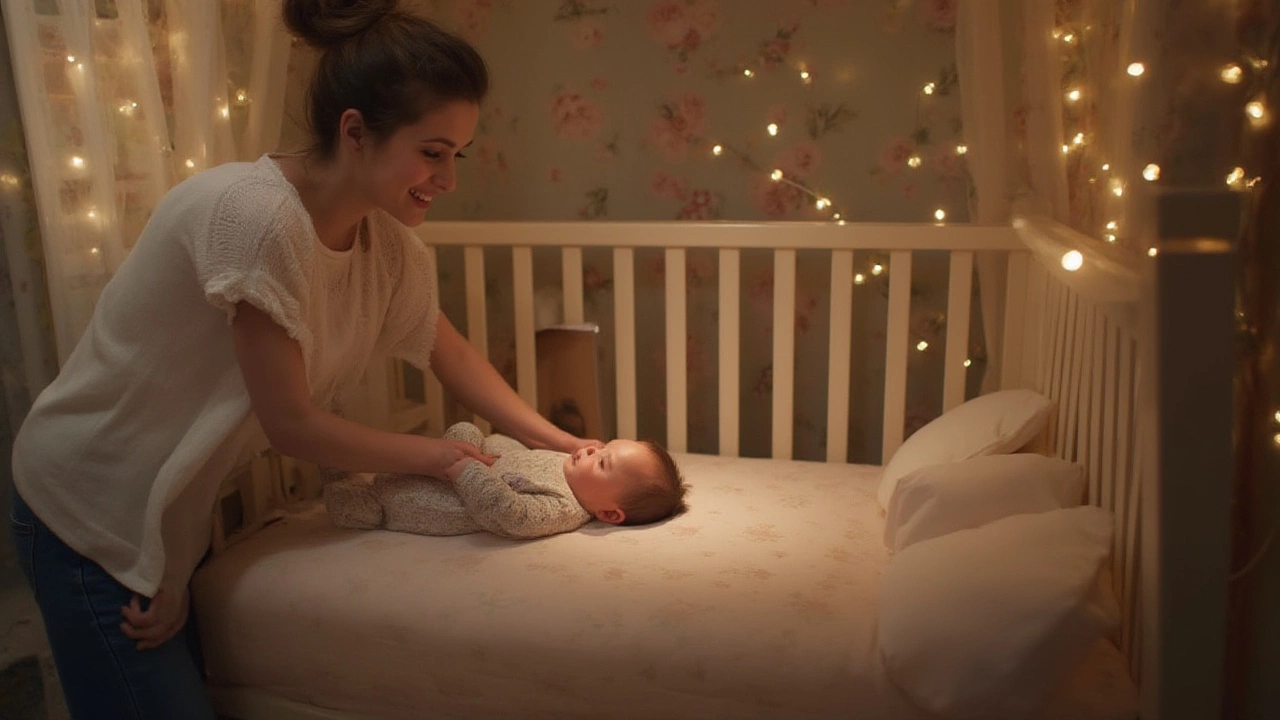Do Strollers Expire? Understanding the Lifespan of Your Baby's Ride

Have you ever wondered if that trusty stroller you've been using has an expiration date? It's not as strange as it seems! Some baby products do come with expiration notices, whether for safety reasons or due to material fatigue over time. But do strollers fall into this category? The simple answer isn't a straightforward yes or no, so let’s unravel this together.
Firstly, let's talk about what's actually in a stroller that could wear out. These aren't just fashion-forward carts for babies; they're complex machines with moving parts, fabrics, and sometimes fragile connections. Over time, the effects of use, weather exposure, and even storage conditions can start to show.
- Stroller Shelf Life: Myth or Reality?
- How to Check for Stroller Safety and Durability
- Maintaining Your Stroller: Tips for Longevity
- Signs It's Time to Let Go of the Stroller
Stroller Shelf Life: Myth or Reality?
So, do strollers truly have a shelf life? Well, it's more than a myth but less than a concrete 'expiration.' Let's elaborate. Unlike car seats, there isn't a mandated expiration date for strollers. However, that doesn't mean they last forever or remain safe indefinitely.
Think of your stroller as a mix of fabrics, plastics, and metals. Over time, these materials degrade differently. For instance, plastics may become brittle after constant sun exposure, affecting the overall safety of the stroller. Wheels can wear down, affecting the ride quality and safety.
Manufacturers might suggest replacing strollers every five to seven years. While not a hard rule, it's a good frame of reference when assessing your existing stroller's condition. Why this timeline? Primarily because design standards and safety regulations can evolve, making older models potentially less safe by comparison.
| Material | Average Lifespan |
|---|---|
| Plastic Parts | 3-5 years |
| Fabric Components | 5-7 years |
| Metal Frame | 7-10 years |
Checking for specific model recalls or advisories, along with regular maintenance, ensures that your baby's stroller is both durable and safe. So, while there's no expiration date on the sticker, be mindful of signs indicating it might be time to say goodbye to that once trusty ride.
How to Check for Stroller Safety and Durability
Ensuring your stroller is safe and sound is key to keeping your child happy and secure. But how exactly do you go about doing that? Let’s break it down into simple steps you can follow.
First off, check out the brakes and wheels. These are crucial parts of any stroller. If the brakes aren’t reliable or the wheels are wobbly, consider it a sign to get that fixed right away. The American Academy of Pediatrics suggests regularly checking these parts as loose or broken components can lead to accidents.
“Regular maintenance of baby products, especially strollers, can't be stressed enough. Proper functioning of brakes and wheels is non-negotiable.” – Dr. Susan Grant, child safety expert.
Next, check all harnesses and buckles. These should snap securely and feel snug without being too tight. Give them a tug to see if they hold firm. If they seem worn out or flimsy, it could compromise your child's safety.
A good stroller should also have a solid frame. Look over the joints and connections for signs of rust or loosening. This can spell trouble if left unchecked. If you have a folding stroller, test the levers and hinges to ensure they lock securely without much effort.
- Brakes: Test them on different surfaces.
- Harnesses: Check for a secure fit and sturdiness.
- Frame: Inspect for rust and stability.
Don't forget to give the fabric a once-over, too. Rips or tears can weaken the stroller's structure. It’s also a good time to clean it up a bit.
Finally, making sure the manufacturer’s guidelines are being followed is crucial. If something feels off after checking these areas, reaching out to the manufacturer for advice is often the best next step.

Maintaining Your Stroller: Tips for Longevity
Keeping your stroller in top shape isn't rocket science, but a few simple steps can make a big difference in how long it lasts. Plus, you'll be keeping your baby safe and comfy. Let’s get into the nitty-gritty of stroller maintenance.
First, always check for any loose parts or screws before heading out. A quick tighten can prevent parts from coming off unexpectedly. Make it a habit, just like checking your tire pressure before a long drive.
Speaking of wheels, they can pick up a lot of grime. Cleaning them with a damp cloth helps them roll smoothly and keeps the stroller stable. Also, lubing the wheel bearings occasionally with a silicone-based lubricant can prevent annoying squeaks and ensure a smooth ride.
The fabric parts need some love too! Most stroller fabrics can be detached and tossed into the wash—just follow the instructions in your manual. For those non-removable parts, a little spot cleaning with mild soap and water usually does the trick.
- Check for damage regularly, especially on high-stress areas like joints, handles, and locks.
- Store your stroller in a dry place to prevent rust and mold. Cover it up if it's going to sit around unused for a while.
- Inspect the brakes frequently to make sure they're holding strong, which is crucial for baby safety.
If you're a data enthusiast, consider this: A 2022 survey indicated that regular maintenance could extend a stroller’s life by up to 2 years on average, providing significant cost savings.
And last but not least, keep working on your stroller maintenance skills—they'll pay off by keeping your baby strolling comfortably and safely for as long as possible!
Signs It's Time to Let Go of the Stroller
Spotting the right moment to retire your stroller can feel tricky, but some clear signals can guide your decision. If your stroller has been through the wringer, it might be compromising your baby's safety. Here are some signs it's time to reevaluate keeping your stroller around.
Structural Damage: Look for cracks, bends, or breaks in the frame. If anything's loose or missing, it could spell safety issues. A minor repair might be doable, but major structural damage is a cue to move on.
Worn-Out Fabrics: Check the seating and canopy fabrics for tears or excessive wear. Weather-exposed fabrics can weaken over time, and frayed straps are a definite safety hazard.
Malfunctioning Parts: The wheels and brakes are critical. If the wheels are wobbly or the brakes don't work reliably, it's time to question the stroller's continued use. This is especially crucial for those adventurous strolls!
Age and Brand Recommendations: Some brands include lifespan guides. Generally, a stroller that's been in the family for over a decade might be close to retirement. If you've lost track of time, look into the manufacturer’s recommendations for usage duration.
If you’re still unsure, consider doing a quick checklist:
- Do all the safety harness buckles fasten securely?
- Does the stroller collapse and lock solidly when folded?
- Have you experienced any unusual noise or resistance in movement?
And remember, if your stroller has outlived its usefulness, it doesn’t mean you can’t recycle or repurpose. Some parts, like wheels and seats, can find a second life in craft projects or as spare parts for other equipment.


